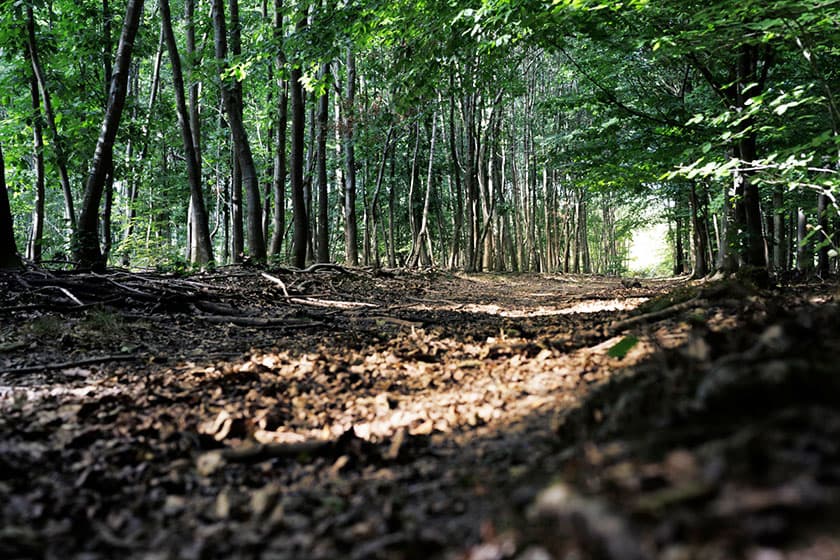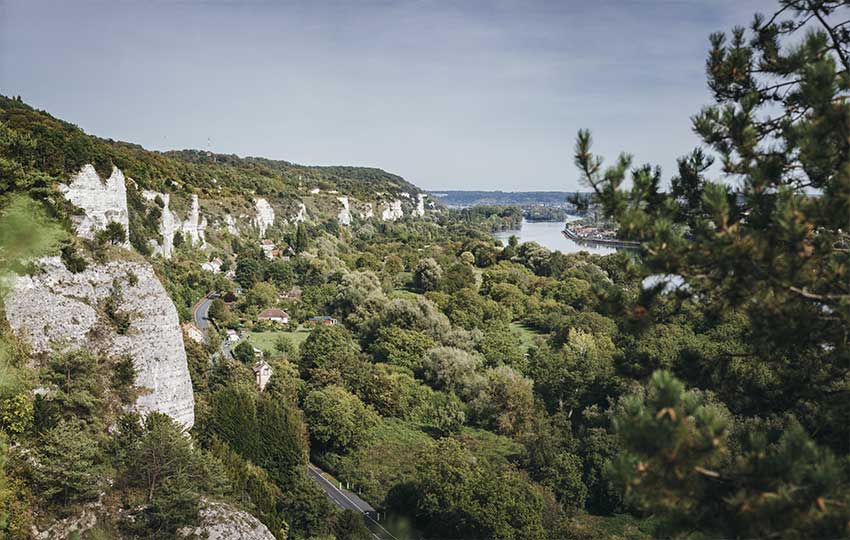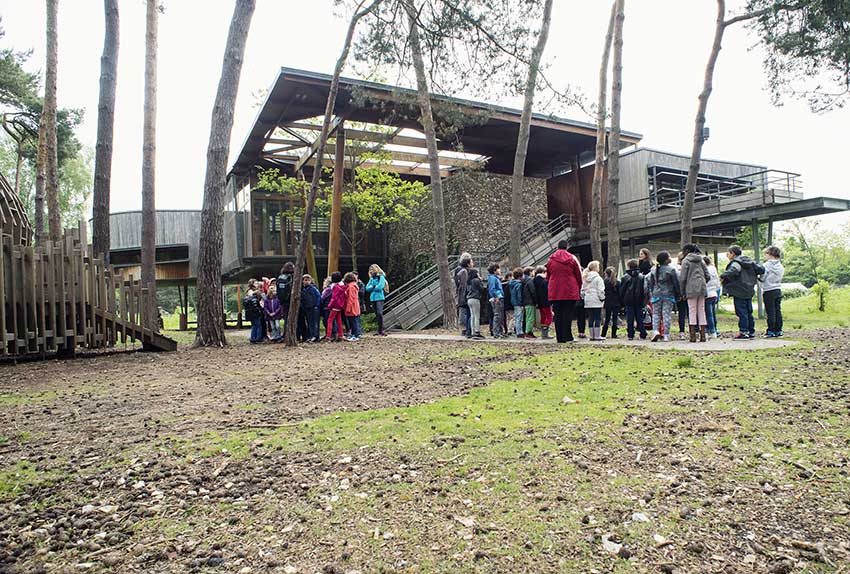With nearly 22,500 hectares of woodland, this metropolitan area is truly a green destination!
Managed by the National Forestry Office and freely accessible to the general public, the state forests are part and parcel of the region’s very identity. Their choice location in the heart of the urban area and the meanders of the Seine means they offer a huge diversity of landscapes and natural habitats waiting to be explored. They also represent a vital timber resource and a whole biodiversity reservoir.
Although their prime purpose is to produce timber while preserving the other riches of the forest, they now also play an important environmental and social role among the 500,000 local residents.
State forest of Roumare

The Roumare state forest occupies virtually all of the loop in the river Seine located downstream from Rouen, on the right bank. Close to the urban area and present in nine municipal territories, it covers almost four thousand hectares.
Nowadays, it is more than half comprised of deciduous trees (57%), mainly beech and oak, the rest being resinous varieties, mostly Scots pine and black pine.
Many clusters of very old trees (twenty-five hectares) and several ponds, including the Epinay pond, the largest, encourage a specific biodiversity.
As in other forests in Normandy, the wildlife includes birds, chiropterans, insects, amphibians and reptiles, as well as small and large mammals such as squirrels, martens, badgers, foxes, roe deer, wild boar, and deer, which is found only in this massif.
The state-owned forest boasts a number of facilities for the public, including a 26-hectare wildlife park for wild boar, roe deer, stags and fallow deer; the Petit-Charme arboretum, where visitors can discover species from all over the world along a number of landscaped trails; a number of remarkable trees; and a 2.1km sports trail, the Ben Harrati trail, a 900m section of which has been adapted for use by people with disabilities, which is currently being restructured.
Did you know ? Felling operations in our forests are programmed under a “forest planning” management scheme drawn up every twenty years by ONF. This document is produced after a soil and vegetation analysis of each parcel. The work aims to determine which varieties are the most suitable, with climate change factored in. Felling operations to improve the quality of the forest take place every eight years on each parcel, to encourage diametrical growth in the best specimens of 20 to 130 years of age. This represents approximately 100 hectares per year. Felling for forest renewal makes it easier for seedlings to grow from the fallen seeds of tall trees that are gradually felled on reaching maturity. Several thousand m3 of timber are harvested from our forests each year.
Its key role in the region’s scenic and environmental quality has been recognised with, among others, an official listing as a Protection Forest in 2007, followed by that of the Seine valley loop as a protected site in 2013. Since June 2015, the quality and reputation of Rouen’s three suburban forests - Roumare, La Londe-Rouvray and Verte - has been highlighted further by the granting of the « Forêt d’Exception » ® seal of approval. This award has been renewed in 2022.
More info on the Roumare Forest and heritage
La Londe-Rouvray Forest

Originally stretching to the banks of the Seine, the forest of La Londe-Rouvray has lost much of its surface area over the centuries. Nevertheless, it remains a vast forest range within the metropolitan area, truly a green lung for the city and home to the Orival oppidum, among other riches, and the nearby ruins of the castle of Robert the Devil.
More info on the La Londe-Rouvray Forest and heritage
Le Trait-Maulévrier Forest
This forest of roughly 3,000 hectares stands to the west of Rouen, inside the Boucles de la Seine Normande Regional Nature Park. Hikers will appreciate its hilly terrain and multiple viewpoints overlooking the Seine.
Forêt Verte (Green Forest)
Formerly known as Silveison Forest, for a long time this forest belonged to the Saint-Ouen Abbey of Rouen. It wasn’t until the French Revolution that it became state-owned. For decades, the Forêt Verte has been the scene of regular felling operations, but that doesn’t prevent its old beech trees, which are currently being renewed, from providing some beautiful timber. In addition, as a protector of habitats and landscapes, this forest has a role to play in the organisation of water resources in the regions that lie below the plateau (Notre-Dame de Bondeville and Le Houme).
More info on the Green Forest and its heritage
For more information about these forests managed by the National Forestry Office, or to consult the hunting calendar, please visit the website www.onf.fr or contact the regional forestry agency in Rouen: ag.haute-normandie@onf.fr.
Activities at the Forestry Centres

To raise awareness of the forests in its area, Métropole Rouen Normandie has created specialised centres, or “Maisons des Forêts”, in Orival, Darnétal and Saint-Etienne du Rouvray. Despite fire damage to the latter in December 2021, the sector still benefits from activities organised at facilities made available on the premises of the Sotteville-lès-Rouen leisure centre. A temporary building will soon be installed at the Ecopolis site, pending its final reconstruction. Throughout the year, activity leaders organise a whole programme on the topic of Normandy wildlife and vegetation, including night walks, creative workshops, exhibitions, school outings, introductory sessions, environment courses and early-learning nature activities.
All good reasons to return with family or friends and find out more about the local fauna and flora.
More details on the website Métropole Rouen Normandie
Hiking in the metropolitan area
